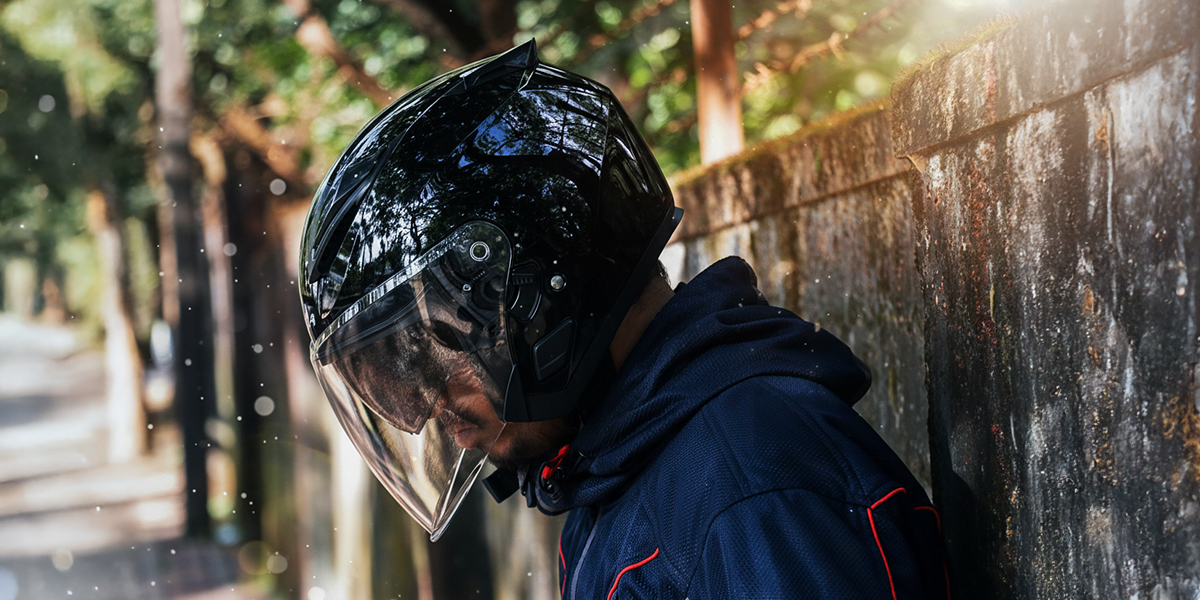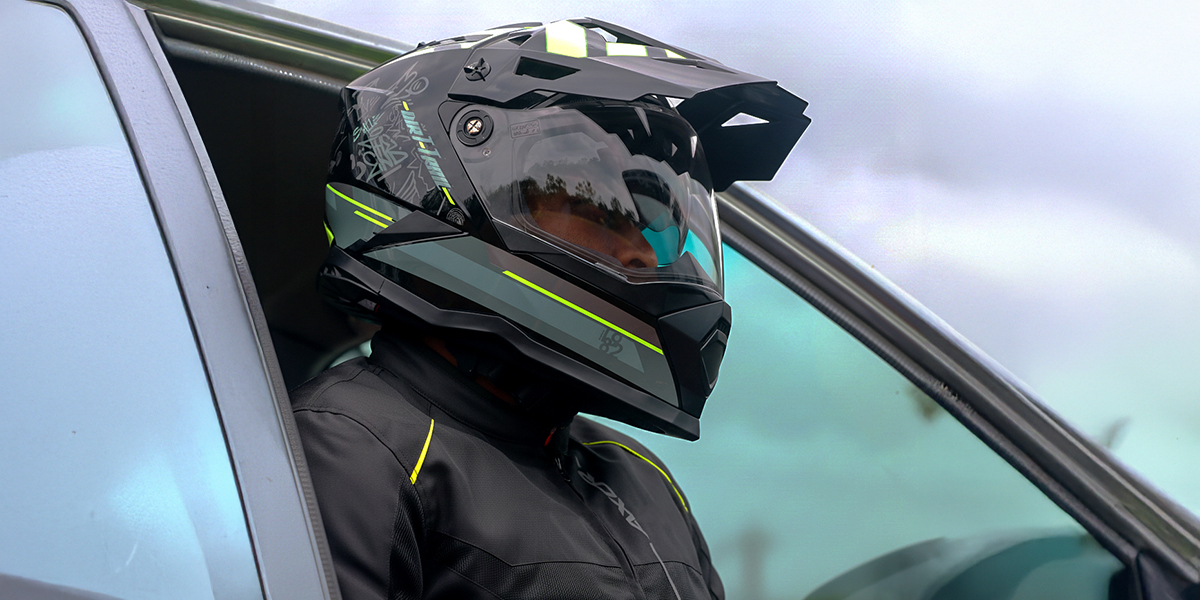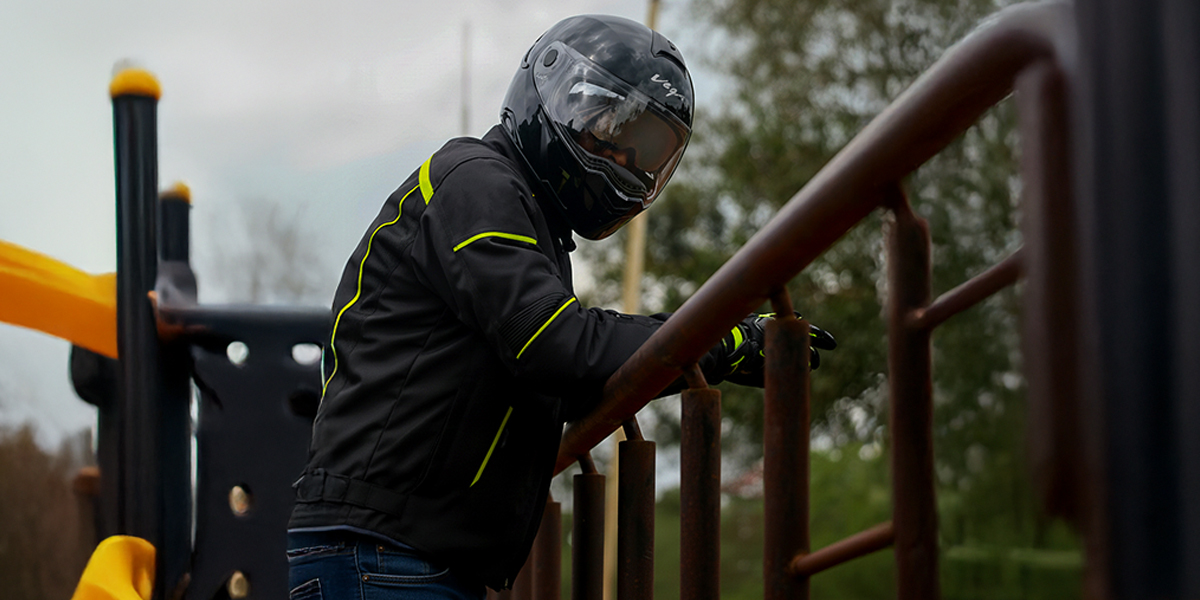
History of Motorcycle Helmets
- -
You’ll find the early styles of a ‘crash helmet’ dating back to the early 1900s, after Dr Eric Gardner was seeing a frequent amount of head traumas and injuries from motorcyclists at the Brooklands race track near where he worked, inspiring him. Gardner asked Mr Moss of Bethnal Green to make ‘canvas and shellac helmets stiff enough to stand a heavy blow and smooth enough to glance off any projections it encountered’. These designs were presented to the Auto-Cycle Union (ACU) but were initially rejected. However, they later warmed to the idea, and it became compulsory for those riders taking part in the 1914 Isle of Man TT races, something that riders were not initially very happy about! 94 helmets were designed, created and sent to the Isle of Man with Dr Gardner. One rider hit a gate at high speed wearing a helmet and it saved his life. It was noted that in the 1914 Isle of Man TT races, no riders were reported to have concussions due to their new helmets. The results from the TT truly changed bikers’ perception of helmets. Riding a motorcycle gives an unmatched sense of thrill and freedom. But when there’s a thrill, there are risks. A motorcycle helmet is an important line of defence, ensuring rider safety. Let’s look into the mesmerising history of motorcycle helmets, exploring their evolution and the main question: Who invented helmets? Vega Auto is honoured to carry this tradition of providing top-quality helmets for riders that represent safety and style. Understanding the history of helmets and other protective gear helps them appreciate the importance of the latest safety standards.
Early Beginnings: Leather Caps and the Dawn of Motorcycling
As motorcycles became more popular in the late 19th and early 20th centuries, simple leather caps and soft headgear were preferred by most riders. These helmets didn’t provide much safety against impacts. As the power and speed of the machines increased, the need for strong head safety gear increased. However, as numerous people contributed to the initial design iterations, it is still challenging to determine exactly who invented helmet in its most basic form. Early motorcycle racing competitions raised awareness by highlighting the risks associated with exposed heads. It was an experimental period when the efficacy of various designs and materials was being evaluated.
- The Impact of Racing: Early motorcycle races served as a testing ground for safety equipment. The necessity for improved head protection was brought to light by the high speeds and frequent collisions.
- Material Exploration: During this time, the transition from basic leather to more durable materials began.
- Public Awareness: The risks of cycling without head protection were made more widely known by early accidents.
The 1930s: T.E. Lawrence and the First “Crash Helmets”
A major turning point in helmet development took place in the 1930s. In 1935, a British Army officer and motorcycle enthusiast, T.E. Lawrence (Lawrence of Arabia), lost his life in a terrible motorcycle accident. The need for adequate head protection was highlighted by this incident. After learning of Lawrence’s passing, neurosurgeon Dr Hugh Cairns started studying head injuries from motorbike crashes. At this point, the hunt for the person who invented the helmet for the modern era starts to take shape.
- Contribution of Dr Hugh Cairns: Cairns’ studies resulted in the creation of the first “crash helmets,” which were made to cushion impacts and shield the head.
- British Military Adoption: By providing dispatch riders with these helmets, the British military greatly decreased the number of head casualties.
- Early Design Features: Compared to earlier leather caps, these helmets had a more solid structure because they were usually composed of cork and shellac.
The Post-War Era: Advancements in Materials and Design
Helmet design was revolutionized with advanced materials and manufacturing techniques after World War II. Materials such as fiberglass and thermoplastic flourished, providing improved strength and durability. Many engineers and industrial material developers are prompted to answer the question of who invented the helmet made of current materials.
- Fibreglass Revolution: Compared to previous models, fibreglass helmets were lighter and offered better impact resistance.
- Thermoplastic Helmets: These helmets were more affordable and still supplied sufficient protection.
- Standardisation Efforts: To guarantee the efficacy and quality of helmets, organisations started creating safety standards.
The Rise of Full-Face Helmets and Modern Innovations
Full-face helmets, which provide complete safety to your head, were first introduced in the 1960s and 1970s. The requirement of protecting the face and jaw, which were exposed in the earlier helmets, was solved with this helmet design. The names of numerous designers from this era come to mind when one asks who created helmet designs that completely shield the face.
- Full-Face Protection: The general level of safety was greatly increased by these helmets.
- Aerodynamic Design: To lessen wind resistance and enhance rider comfort, manufacturers started concentrating on aerodynamic designs.
- Ventilation Systems: To improve comfort under a variety of riding circumstances, better ventilation systems were implemented.
- Visor Technology: Improved visibility was made possible by advancements in visor technology, such as anti-fog and scratch-resistant coatings.
Vega Auto’s Commitment to Safety and Innovation: The Future of Helmets
At Vega Auto, we recognise the value of continuous improvement in helmet design and technology. We are dedicated to giving motorcyclists the best possible safety, comfort, and style in their helmets. Our emphasis on cutting-edge designs, thorough testing, and sophisticated materials guarantees that our helmets both meet and surpass industry requirements. With our commitment to research and development, we aim to provide an answer to the issue of who designed the safest and most modern helmets.
- Innovative Materials: To make lightweight and long-lasting helmets, we use innovative materials like carbon fibre and polycarbonate.
- Thorough Testing: To make sure they fulfil strict safety requirements, our helmets go through a rigorous testing process.
- Ergonomic Design: To ensure a snug and comfortable fit, we prioritise ergonomic designs.
- Technology and Innovation: To provide our helmets with the newest advancements, we consistently invest in research and development.
- Focus on the Customer: We value client opinions and work hard to go above and beyond their expectations in terms of quality and service.
- International requirements: To further demonstrate our dedication to rider safety, we make sure our helmets adhere to international safety requirements.
- Continuous Improvement: In order to deliver the best helmets possible, we are always looking to enhance our procedures and products.
- Safety Awareness: By stressing the value of wearing helmets, we actively work to raise riders’ awareness of their safety.
- Future Development: By creating smart helmet technologies, Vega Auto is concentrating on the future of helmet technology and attempting to answer the question of who invented the future helmet.
- Community Engagement: To comprehend the requirements and preferences of the motorbike community, we interact with them.
The development of the motorcycle helmet is evidence of the unwavering quest for innovation and safety. The progression from simple leather caps to sophisticated carbon fibre helmets has been astounding. We at Vega Auto are honoured to carry on this tradition by offering motorcyclists helmets that meet the strictest requirements for quality and safety. We are dedicated to pushing the limits of helmet design as technology develops further and making sure that every rider has a fun and safe riding experience.






